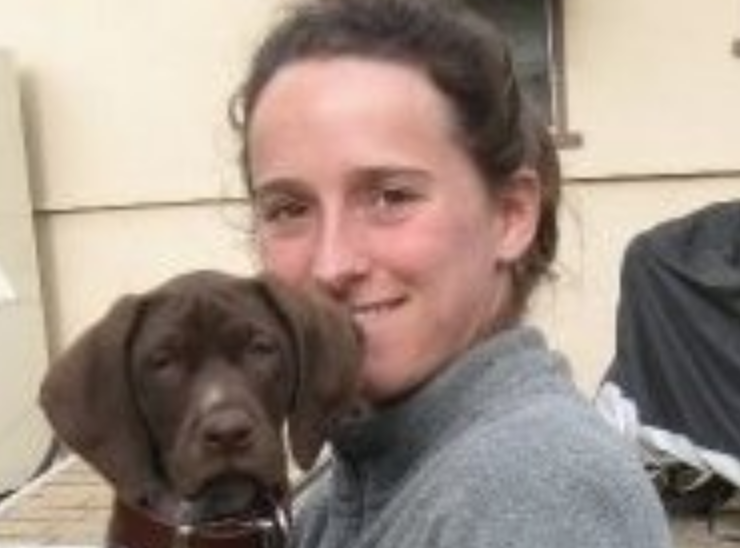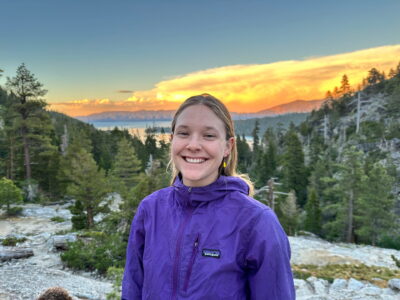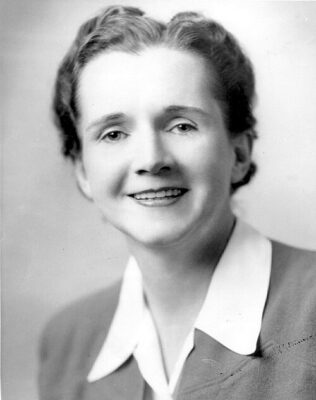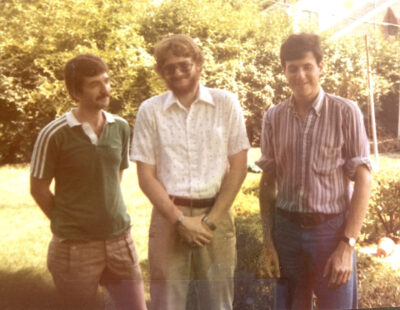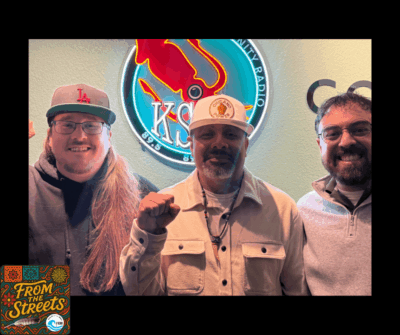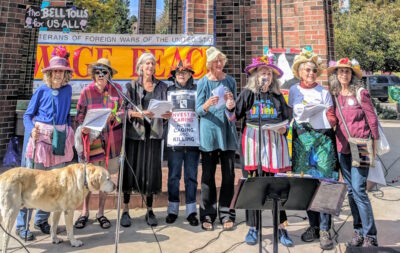
Sacramento,CA: Under a court-ordered deadline to regulate the use of the cancer-causing fumigant pesticide 1,3-dichloropropene (1,3-D, or Telone), the California Department of Pesticide Regulation (DPR) on Tuesday issued a draft rule that opens the door to increased use of the third most heavily used pesticide in California agriculture.
Among the proposed provisions of the draft regulation are the elimination of limits on use (previously capped at 136,000 pounds per 6×6 mile “township”), adoption of a cancer risk level that is 14 times more lenient than the level recommended by CalEPA Office of Environmental Health Hazard Assessment (OEHHA) scientists, and the assumption that new experimental emissions reduction measures, including increased soil water saturation and deeper injections, will be strictly followed and will greatly reduce air emissions.
“While much of the world is banning 1,3-D, California is allowing for even more to be used, by eliminating the use caps,” said Yanely Martinez, Greenfield City Councilmember in Monterey County. “And now DPR has given us a number for how little they value farmworker communities: According to them, we’re worth 14 times less than other California residents, because that’s how much more cancer DPR is willing to allow by exposure to 1,3-D than our state toxicologists at OEHHA say is safe. This is a racist policy.”
DPR has set the lifetime cancer risk air concentration level for 1,3-D, the level that would require mitigations, at 0.56 parts per billion (ppb), while OEHHA’s “no significant risk level” (NSRL) converts to 0.04 ppb[1] – 14 times less. OEHHA states: “[T]he Proposition 65 no-significant-risk value is defined as one excess case of cancer in an exposed population of 100,000, assuming lifetime exposure at the level in question. The NSRL is the daily intake that would result in that level of cancer risk over a lifetime”; and “OEHHA develops and adopts NSRLs to provide guidance for determining when a warning is required for exposures to chemicals listed under Proposition 65 as causing cancer.”[2] DPR did not list OEHHA’s 1,3-D NSRL document in its list of 32 “documents relied upon” in its “Initial Statement of Reasons and Public Report.”
Others also expressed concern that DPR’s draft rule protects industry but not the health of farmworker communities.
“A total gift to industry – it’s dispiriting that DPR would spend so many years developing a draft rule that does so little to protect our health and so much to preserve the status quo,” said Jane Sellen, Co-Director of the statewide coalition Californians for Pesticide Reform, a co-plaintiff in the lawsuit that compelled DPR to regulate 1,3-D. “This draft rule does little to protect the people who live and work where use of this chemical is concentrated – the vast majority of whom are Latino residents of farmworking communities in the Valley and Coast regions. Californians must say NO to this proposal, loudly and clearly and often. DPR must go back to the drawing board, or we will see them in court. AGAIN.”
The lack of use limits and specific reduction goals in DPR’s draft plan is a major criticism from pesticide reform advocates.
“Repeatedly we see decision-making that is focused on protecting industry’s ability to continue using cancer-causing chemicals like 1,3-D,” said Bianca Lopez, founder of Modesto-based Valley Improvement Projects. “Until we start to see binding commitments that today’s decision makers – not our grandchildren – have to meet, it’s hard to have much faith in them. Show us you mean it with today’s rulemaking.”
“Valley residents are being choked by some of the worst air in the nation, and yet repeatedly industry is let off the hook. We know that 1,3-D is toxic to humans and a significant source of Volatile Organic Compounds, one of the main ingredients for ozone formation. Yet DPR refuses to set an enforceable target for reducing use or emissions from this hazardous and highly drift-prone chemical,” said Genevieve Amsalem, Research and Policy Director with Fresno- and Bakersfield-based Central California Environmental Justice Network.
At more than 12 million pounds reported use per year, 1,3-D is the third most heavily used pesticide in California agriculture, used as a pre-plant soil fumigant for strawberry crops along the Central Coast and for a wide range of crops in the San Joaquin Valley including almonds and sweet potatoes. It is a Restricted Material pesticide, which means growers must get an annual permit for its use and then provide a Notice of Intent to the County Agricultural Commissioner immediately prior to each use. 1,3-D is a volatile organic compound, is classified as a Toxic Air Contaminant and a Prop. 65 carcinogen, and is banned in 34 countries. It is also known to drift for miles: a high level was recorded in 2020 at DPR’s air monitoring station in Shafter (Kern County) with the closest known application more than seven miles away.
1,3-D Historical background
Advocates note the long history of questionable practices for this chemical, dating back to 1995 when it was brought back after a five-year ban implemented in response to a high air level measured in 1990 in Merced County. DPR allowed the manufacturer Dow (since renamed Corteva) to largely establish, and then track and monitor, new limits for 1,3-D use. Under these Dow-influenced limits, a use cap of 90,250 pounds per 6×6 mile township was established, and Dow was made responsible for ensuring that collective use did not exceed that cap. When pesticide applicators wanted to exceed the cap, several years later, they were allowed to “roll over” unused portions from prior years, and to apply for a waiver if they needed even more. In 2016, DPR ended rollovers and waivers, but also relaxed the lifetime cancer risk level, over the strenuous objection of CalEPA OEHHA scientists, to justify increasing the use cap 50%, to 136,000 pounds per township – almost the exact amount industry had lobbied DPR for behind the scenes for years, as revealed by public records act requests. At this point, DPR and Dow were sued for irregular “underground” rulemaking and were ordered by the court in 2018 to create a lawful rule. The decision was upheld on appeal in 2021.
Despite the court order requiring DPR to develop the rule to address both residential and worker bystanders in its rulemaking, and to work “in concert with” OEHHA on the rulemaking, DPR instead drafted a rule targeting only residential exposure, thereby avoiding the requirement to defer to OEHHA’s much more health-protective cancer risk level.
“It is an outrageous environmental injustice for DPR to continue to allow farmworkers to work for full days, even multiple workdays, up to the very edge of the treated field in adjoining fields immediately after and even during the fumigation while occupied structures except for barns and other farm work structures are protected by setbacks of 100 to 500 feet. DPR’s pilot studies show that peak levels can be over 140 ppb next to fumigated fields,” said Anne Katten, Pesticide and Work Safety Project Director with California Rural Legal Assistance Foundation.
Meanwhile, several very high air concentrations have been measured in the San Joaquin Valley, including one in Fresno County that was more than 3 times the 1990 level that resulted in a 5-year ban. To date, DPR has done nothing to address or prevent these high levels, and no notice is given in advance of applications so that people can take protective measures. In 2020, the California Air Resources Board committed to a 1,3-D notification program for the town of Shafter in Kern County, and allocated $250,000 toward its implementation. The program would have required web-posted notices of intent to use 1,3-D within a 7-mile radius of Shafter. However, the Kern County Agricultural Commissioner refused to implement the program, and almost three years later, 1,3-D applications continue without notice. In 2020, two very high levels of 1,3-D were measured in Shafter, one of them higher than the level that resulted in a 5-year ban in 1990.
“Shafter residents joined hundreds of meetings over many years, trying to get advance warning of 1,3-D use, but one single unelected local official – Glenn Fankhauser, the Kern County Ag Commissioner – was able to defy the state and just simply refuse to give it,” said Shafter resident Anabel Marquez. “We are repeatedly exposed to really high levels of this cancer-causing chemical, and we still have no idea when it’s happening. We feel our lives and our health don’t matter.”
The State has tested the air concentrations of 1,3-D at 9 different pesticide air monitors, including Shafter, since 2011. As the table below indicates, the average 1,3-D levels have been above OEHHA’s lifetime cancer risk level at every station.
TABLE. 1,3-dichloropropene air concentrations are above OEHHA’s 0.04 ppb NSRL for lifetime cancer risk at all 9 air monitor stations that tested for more than 2 years
| Site
|
County | Annual air concentration of 1,3-dichloropropene in parts per billion, reported by DPR | |||||||||||
| 2011 | 2012 | 2013 | 2014 | 2015 | 2016 | 2017 | 2018 | 2019 | 2020 | 2021 | Ave. | ||
| Kearney Ag, Parlier[a] | Fresno | na | na | na | na | na | na | 0.62 | 2.94 | 0.27 | 0.51 | 1.55 | 1.16 |
| Shafter High, Sequoia Elem-2/19[a] | Kern | 0.23 | 0.08 | 0.57 | 0.2 | 0.18 | 0.34 | 0.11 | 1.52 | 0.13 | 1.8 | 0.16 | 0.49 |
| Schendel Elementary, Delhi[a] | Merced | na | na | na | na | na | na | 0.13 | .019 | 0.15 | 0.46 | 0.68 | 0.32 |
| Ohlone Elementary-north[a] | Monterey | na | 0.16 | 0.13 | 0.09 | 0.12 | 0.07 | 0.09 | 0.05 | 0.06 | 0.12 | 0.06 | 0.10 |
| Salinas Airport[b] | Monterey | 0.30 | 0.06 | 0.09 | 0.01 | 0.04 | 0.04 | na | na | na | na | na | 0.09 |
| Chualar- east well[c] | Monterey | na | na | na | na | na | na | 0.10 | 0.03 | 0.04 | na | na | 0.06 |
| Ripon Police[d] | San Joaquin | 0.31 | 0.05 | 0.19 | 0.07 | 0.08 | 0.09 | na | na | na | na | na | 0.13 |
| Santa Maria High,Bonita Elm-11/19[a] | Santa Barbara | 0.16 | 0.19 | 0.19 | 0.11 | 0.11 | 0.12 | 0.08 | 0.06 | 0.05 | 0.11 | 0.08 | 0.12 |
| Rio Mesa High, Oxnard[a] | Ventura | na | 0.19 | 0.17 | 0.09 | 0.21 | 0.11 | 0.11 | 0.06 | 0.06 | na | 0.03 | 0.12 |
na: data not available
[a] DPR presentation to Pesticide Registration and Evaluation Committee, “2021 1,3-D Ambient Air Monitoring Results,” slide 29.
[b] “Air Monitoring Network Report: A Comprehensive Evaluation of Results (2011 – 2016),” DPR, June 2018, p. 38.
[c] DPR presentation to the Pesticide Registration Evaluation Committee, “2019 1,3 D Ambient Air Monitoring Results,” slide 29.
[d] “Air Monitoring Network Report: A Comprehensive Evaluation of Results (2011 – 2016),” DPR, June 2018, p. 42.
[1] 1,3-D NSRL = 3.7 micrograms per day. Breathing rate used by OEHHA = 20 cubic meters per day (from OEHHA regs 27 CCR § 25721 Level of Exposure to Chemicals Causing Cancer). https://govt.westlaw.com/calregs/Document/IBBC153FD512211EC828B000D3A7C4BC3?viewType=FullText&originationContext=documenttoc&transitionType=CategoryPageItem&contextData=(sc.Default) If a person breathes air contaminated with 3.7/20 (=.185) micrograms per cubic meter of 1,3-D. they will be exposed to 3.7 micrograms per day. To convert .185 micrograms per cubic meter to ppb, and given 1,3-D’s molecular weight of 111, we used https://www.gastec.co.jp/en/technology/knowledge/concentration/ to yield 0.04 ppb.
[2] https://oehha.ca.gov/media/downloads/crnr/13-dnsrlsfsorfinalremediated.pdf, pages 6, 10





